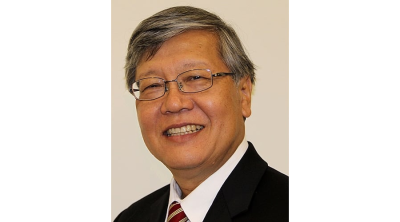Sin Chew Daily
Prime minister Datuk Seri Ismail Sabri Yaakob announced on Monday that the country’s population rose to 32.4 million (including non-citizens) in the latest 2020 census, while the population of Malaysian citizens increased by 4.6 million to 29.8 million since the last census in 2010.
Several messages were brought up by the latest census data, including the fact that although the population of Chinese Malaysians has increased by 740,000, its percentage of the country’s total population has slipped further from 24.5% to only 23.2%.
Meanwhile, the percentage of senior citizens aged 65 and above has also increased from 5% to 6.8%, marking a start of the country’s advances towards an ageing society.
Let’s first talk about the issue of population ageing and how the government is tackling it.
Firstly, the situation of population ageing is actually not too serious in this country, and the 6.8% ratio is yet to reach the lowest threshold of the international definition of an ageing society, i.e. at least 7-14% of population above the age of 65. Globally, this percentage now stands at 9.5%.
Secondly, the increased percentage of aged population shows that the average life expectancy has increased as a result of improved medical care quality, which is not a bad thing after all.
Countries with people aged 60 and above making up at least 20% of the population, such as Japan, Germany, the United States, Britain, Italy, Switzerland and France are all developed countries boasting very high standards of medical care services.
Thirdly, in 2020, people aged 60 and above were all born before 1955 or during the postwar baby boomer years (1946 to 1964). Their children were born between 1966 and 1990, also another baby boomer generation. People born in the 1960s and 70s were mostly from big families with eight to ten siblings. But their children obviously have very different views on having a lot of children.
Fourthly, the cost of having children began to go up after 1990. Countries like Japan and Taiwan encouraged their citizens to have fewer children back in the 1980s. China’s “one child policy”, for instance, has had very damaging implications on the country’s socioeconomic conditions.
China had 190 million people aged 65 and above in 2020, or about 13.5% of the country’s total population, far higher than our 6.8%. As a matter of fact, many Asian countries and territories are suffering much more severe population ageing problem compared to us, including Japan, China, Hong Kong, Taiwan and South Korea.
We are not very far from being an ageing society because our government has not had a long-term program to discourage Malaysians from having too many children. In the absence of government intervention, the number of children in a family is wholly determined by the parents themselves. That’s why our population has increased by 4.9 million during the past ten years, a reassuring fact compared to countries with a shrinking population such as Japan, South Korea and Taiwan.

If the government is really worried about us becoming an ageing society, then it must have some plans ready, including the caring of senior citizens. Perhaps the government should consider building more people-friendly public nursing centers and old folks’ homes with adequately trained care personnel for people who do not have sufficient savings to sustain their retirement or whose children are unable to take care of them.
Additionally, the government should also enhance public healthcare quality to allow senior citizens to live with dignity. These are all important things the government should do in anticipation of the advent of an ageing society.
Now let’s talk about the dwindling population ratio of Chinese Malaysians. Is the trend something we should really be worried about?
First and foremost, the percentage of Chinese population has decreased from 24.5% to 23.2% over the past ten years, despite a 740,000 or 11% increase in the absolute number to 6.91 million over the same period of time.
The dwindling population ratio means the relative increase in the population of the other racial communities, notably the bumiputras whose ratio has surged from 67.4% to 69.4%.
Well, nothing of concern if we are Keluarga Malaysia. Otherwise, Chinese Malaysians will be further marginalized in the future — in politics, education and economy!
Moreover, it is difficult for us to tell Chinese Malaysians to have more babies because people born in the 1990s are only prepared to have one or two children at most. As such, it is anticipated that the ratio of Chinese population could shrink further to below 20% in the next census in 2030.
The lower population ratio will also mean that Chinese Malaysians may have to surrender some of their political rights. As a matter of fact, constituency redelineation in the country has been extremely unfair to the minorities, causing them to gradually lose their political influences.
Given the fact that Chinese political parties are acutely confrontational and many Chinese voters have become alienated from one another due to their divergent political allegiances, it no longer matters now whether the ratio of Chinese population will be rising or falling.
Lastly, what really deserves our attention is the future of Chinese language education in this country.
With the Chinese population ratio dwindling, the country’s education development trend will likely edge towards congruency. That said, whether we should move towards a singular or plural education system should be determined by the needs of the people and not to be exploited as a political tool.
During an interview with Sin Chew Daily before the Chinese New Year, former prime minister Datuk Seri Najib Tun Razak unreservedly emphasized the importance of learning the Chinese language because an additional language will reinforce a person’s competitiveness.
And since it is a global trend now to learn the Chinese language, we should not be excessively worried about the tremendous pressure the local Chinese community has to bear due to a sharp decline in Chinese student population. Let’s just allow the need for the learning of the language to determine the sustained inheritance of the Chinese culture in this country.
ADVERTISEMENT
ADVERTISEMENT


































